Celebration Of Spring Crostini Recipe
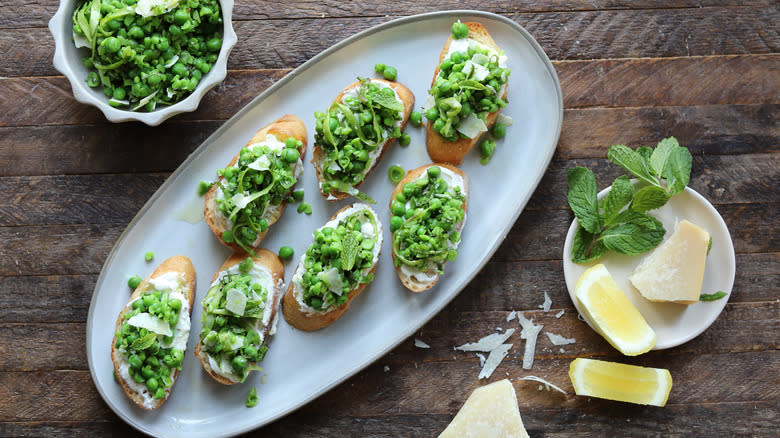
Once the long cold winter is over, our palates start to crave something fresh and bright. Luckily, at this time of year, Mother Nature has a few delicious vegetables coming up fast. Early in the spring, light green spring vegetables come into season, such as peas, asparagus, and mint. If you're looking for a simple way to combine all these flavors into one easy dish, this spring pea crostini is a true celebration of the season that you might want to try. This simple dish is equally great for a festive Easter brunch dish or as a light appetizer for lunch, dinner, or as part of an hors d'oeuvres spread at a gathering. This bright dish brings that "wow" factor with very little effort.
Recipe developer Taylor Murray walks us through the steps to make one of her favorite spring dishes. "In truth, the pea mixture in this recipe is not much different than one I use often for pasta. If you want, you can also re-use the mixture by adding it to freshly cooked pasta instead of topping the ricotta crostini," says Murray.
Read more: The 20 Best Olive Oils For Cooking
Gather The Ingredients For Celebration Of Spring Crostini
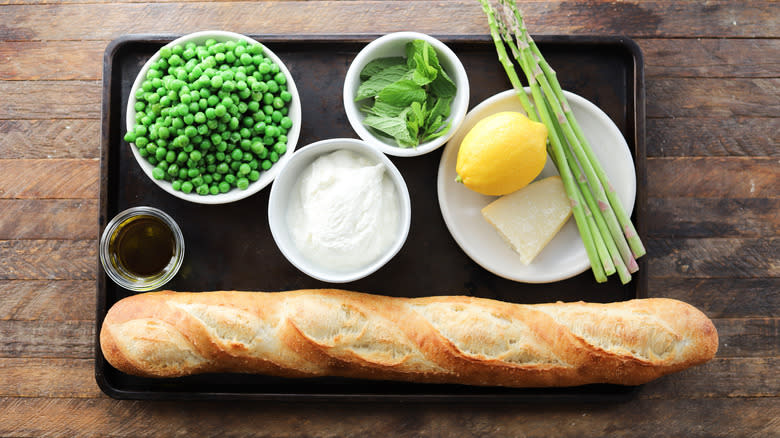
As with most crostini recipes, the foundation is a nice crusty baguette. The baguette is thinly sliced and toasted in the oven with olive oil to make a crispy base for our pea mixture. For that, you'll need cooked peas, either frozen and thawed or fresh peas that get a quick blanch. We're also going to add some thinly sliced raw asparagus into the mix, along with shaved parmesan, lemon, and fresh mint. This mixture will sit atop a fluffy cloud of seasoned lemony ricotta cheese.
Step 1: Preheat The Oven
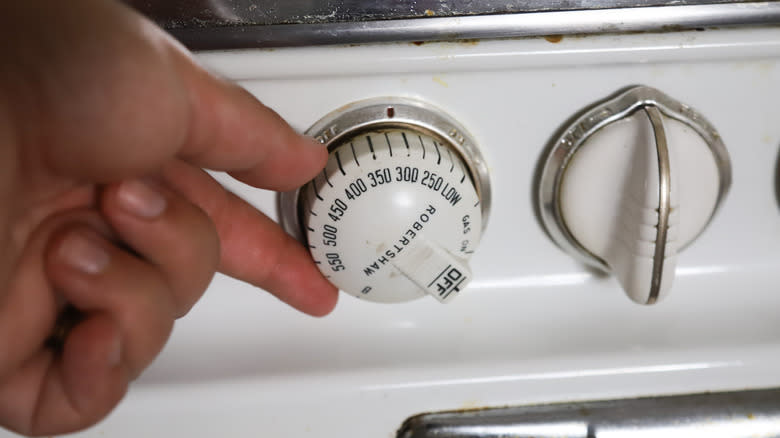
Preheat the oven to 400 F.
Step 2: Slice The Baguette
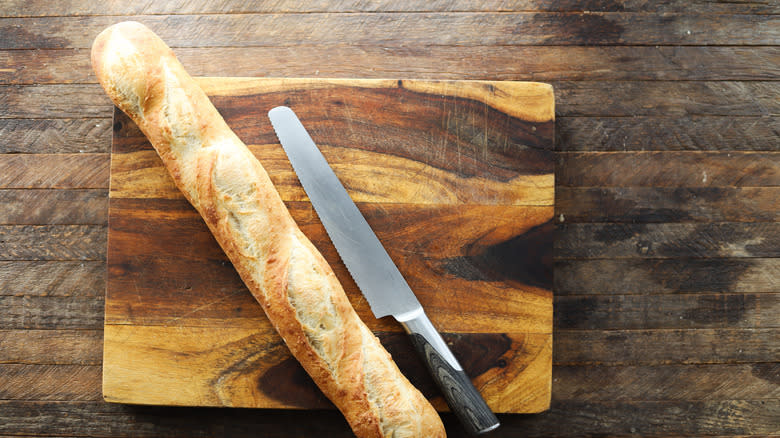
Slice the baguette on the bias into ½-inch thick slices.
Step 3: Drizzle The Bread With Oil
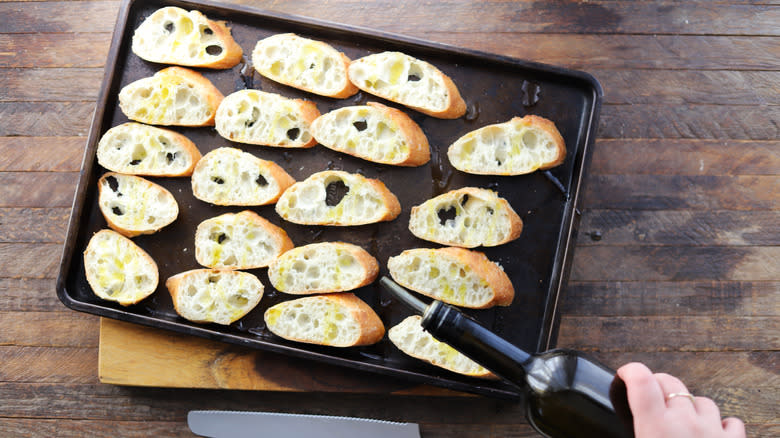
Place the slices on a rimmed baking sheet and drizzle with 1 ½ tablespoons of olive oil.
Step 4: Bake The Slices Of Bread
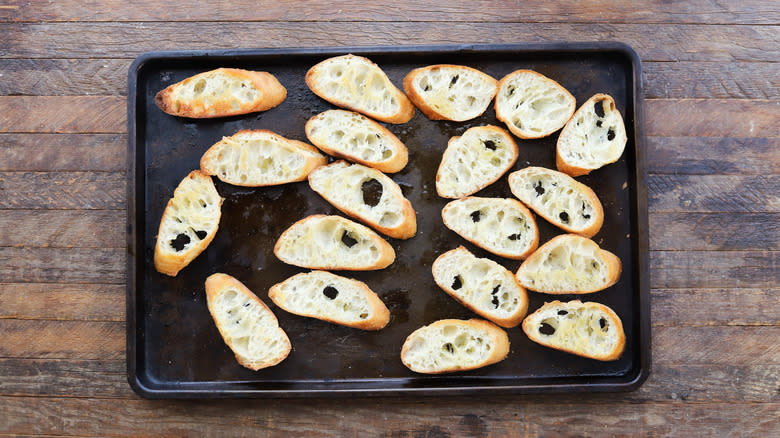
Bake until golden brown and toasted, about 15 minutes, then remove from the oven and let cool.
Step 5: Season The Ricotta
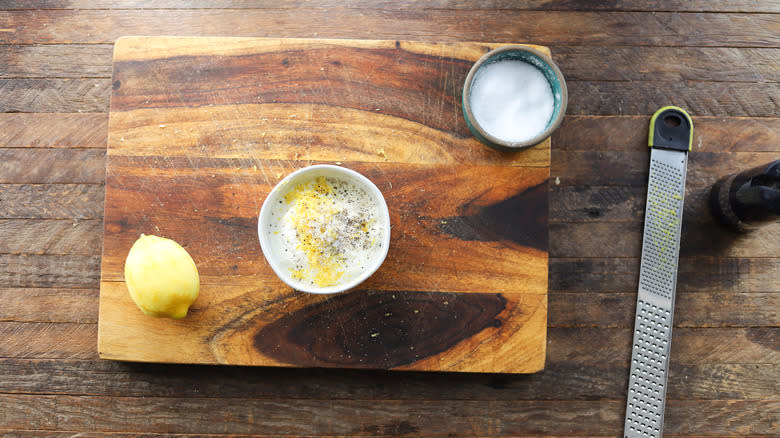
Meanwhile, zest the lemon and combine the zest with the ricotta. Season to taste with salt and pepper.
Step 6: Shave The Asparagus
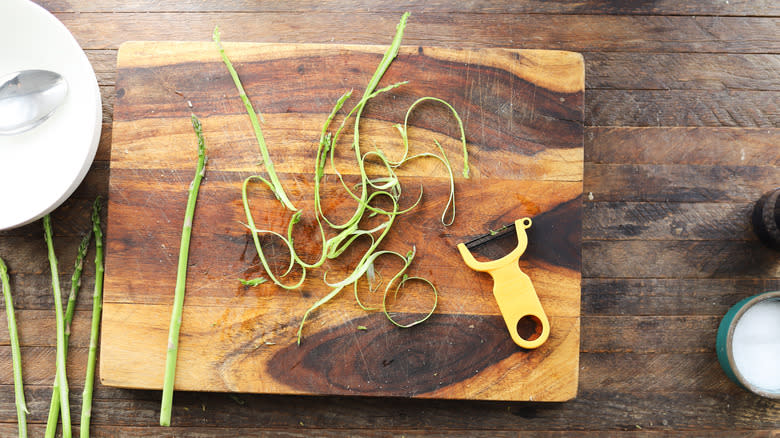
Use a peeler to shave the asparagus into ribbons.
Step 7: Chop The Peas
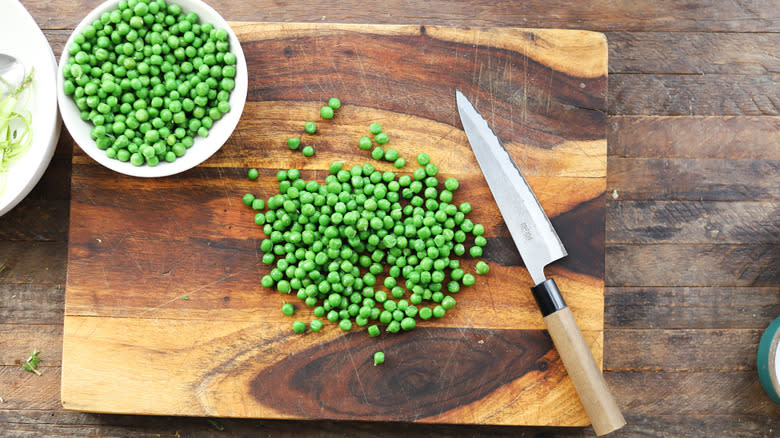
Roughly chop about ⅔ of the peas (or pulse in a food processor) and add them to a bowl with the shaved asparagus.
Step 8: Add The Parmigiano Reggiano
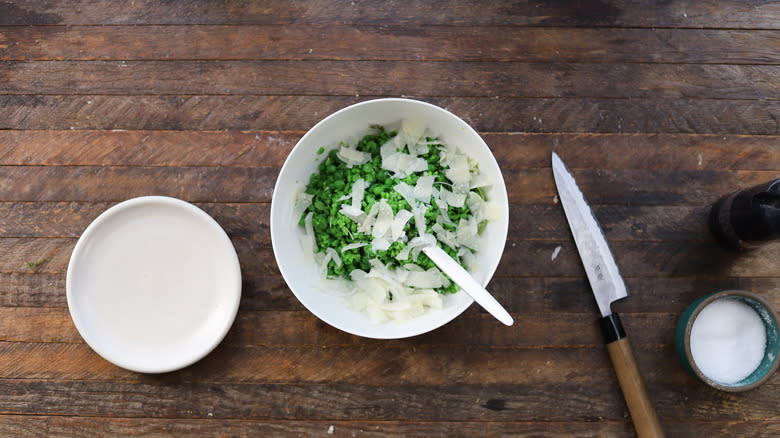
Combine the asparagus and peas with the Parmigiano Reggiano.
Step 9: Chop The Mint
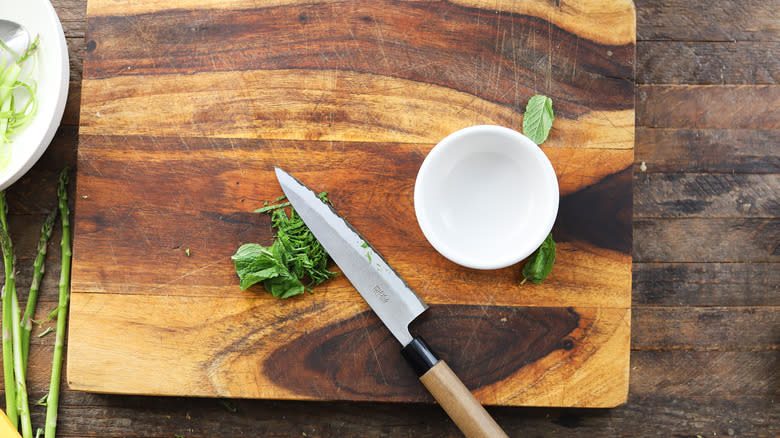
Finely chop the mint and add it to the pea mixture.
Step 10: Season To Taste
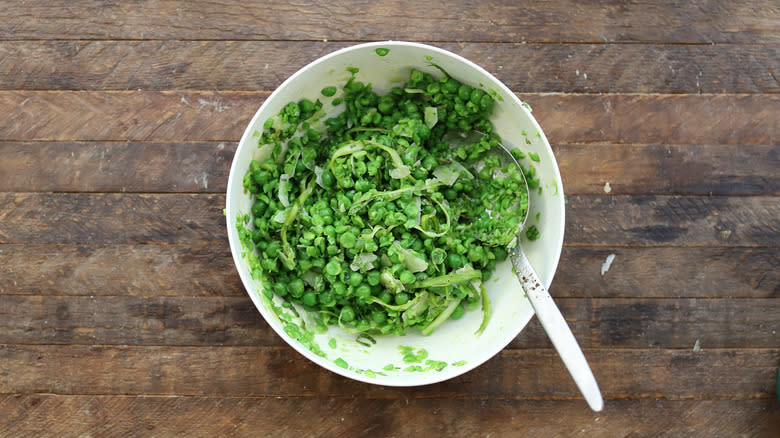
Add the juice of half the lemon and the remaining 1 ½ tablespoons olive oil. Season to taste with salt and pepper.
Step 11: Spread The Ricotta On The Bread

Spread the ricotta on the crostini.
Step 12: Top With The Pea Mixture
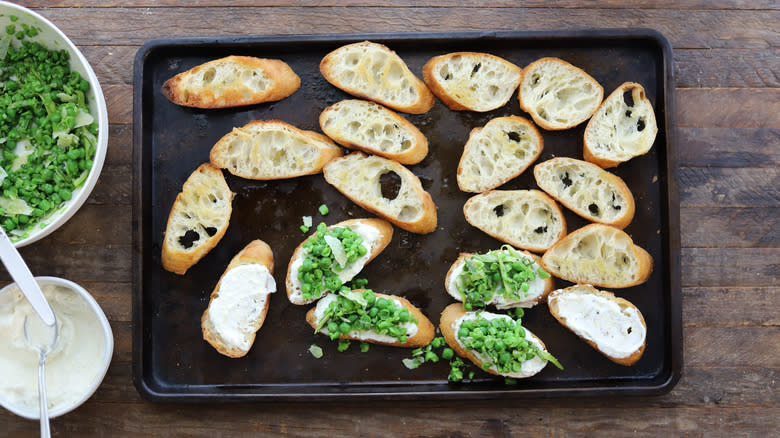
Top the ricotta with the pea mixture.
Step 13: Serve The Crostini Immediately
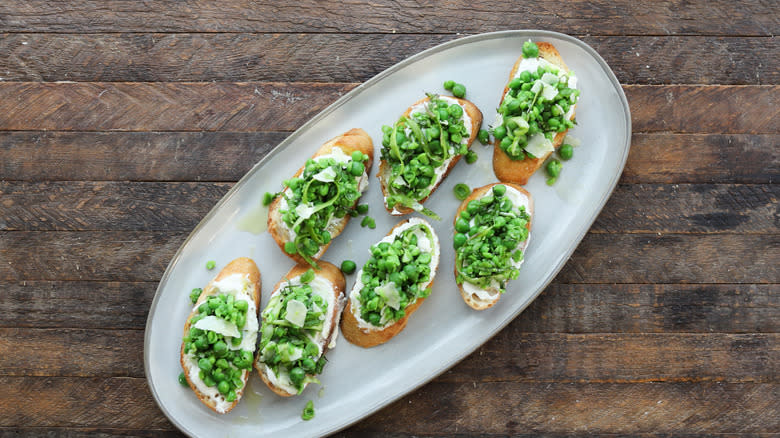
Serve the pea and asparagus crostini immediately.
How Do I Blanch Fresh Peas?
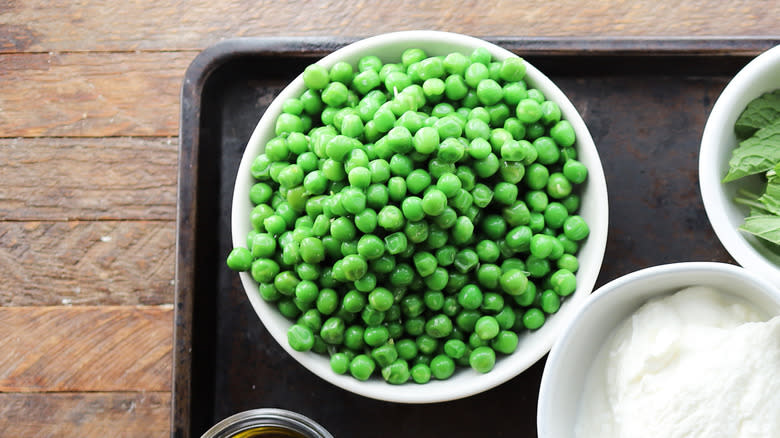
Blanching fresh peas is a quick and easy process that helps preserve their vibrant green color and sweet flavor. Begin by bringing a large pot of water to a rolling boil. While the water is heating, prepare a bowl of ice water and set it aside. This will be used to shock the peas after blanching to halt the cooking process immediately. Once the water is boiling, add the peas and let them cook for about 1 to 2 minutes. The goal is to slightly soften them but let them retain their crispness and bright color.
Quickly drain the peas and immediately plunge them into the ice water. This shock stops the cooking process, ensuring the peas remain tender and green. After they have cooled in the ice water for a few minutes, drain the peas thoroughly. They are now ready to be used in your recipe or frozen for later use.
Can I Prepare Pea And Asparagus Crostini Ahead Of Time?
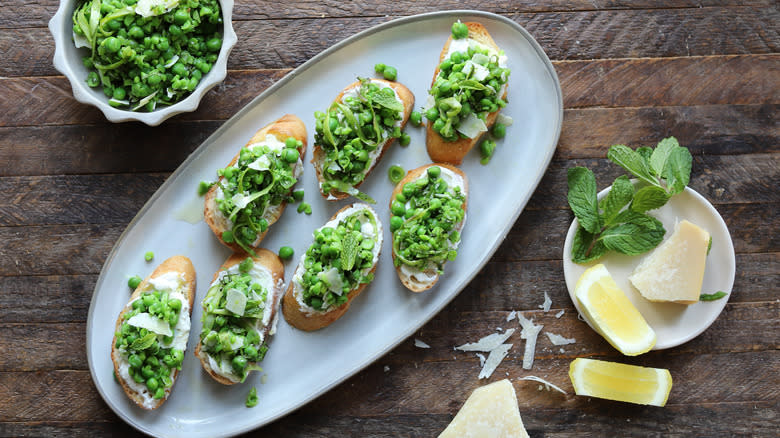
With a few adjustments, this recipe can easily be made ahead of time and thrown together right before your special gathering. The toasted bread slices can be made up to three days in advance and stored in an airtight container at room temperature. The ricotta mixture can be made up to two days in advance and stored in a covered container in the refrigerator. The seasoning may need to be adjusted slightly before serving: You might want to add a pinch more salt to make the flavor more lively, so be sure to taste it before spreading it on the toast.
Finally, the pea mixture can be partially made in advance. It's best to leave out the lemon juice and the mint to add right before serving. The lemon juice is acidic and will break down the other ingredients in the mix, causing them to turn mushy. Mint is a sensitive herb that starts to oxidize and break down as soon as it is cut or bruised in any way, so add that immediately before serving to ensure its brightness and freshest flavor.
Celebration Of Spring Crostini
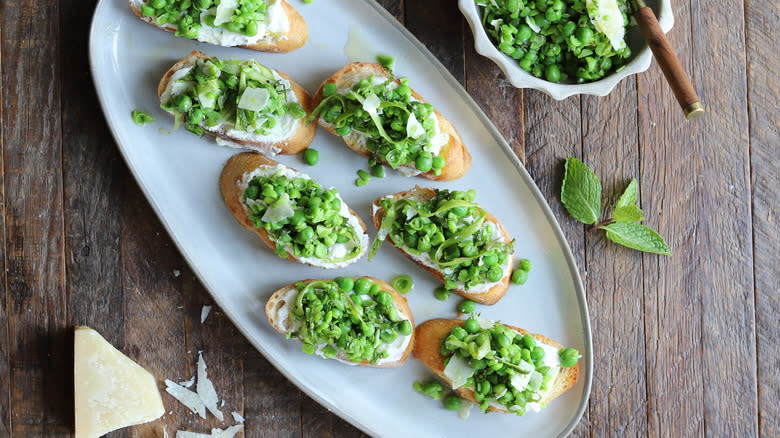
Prep Time: 15mCook Time: 15mYield: 16 CrostiniIngredients
1 baguette
3 tablespoons olive oil, divided
1 lemon
1 cup ricotta
5 stalks of asparagus
2 cups cooked peas
1 ounce Parmigiano Reggiano, shaved
¼ cup fresh mint leaves
Salt and pepper, to taste
Directions
Preheat the oven to 400 F.
Slice the baguette on the bias into ½-inch thick slices.
Place the slices on a rimmed baking sheet and drizzle with 1 ½ tablespoons of olive oil.
Bake until golden brown and toasted, about 15 minutes, then remove from the oven and let cool.
Meanwhile, zest the lemon and combine the zest with the ricotta. Season to taste with salt and pepper.
Use a peeler to shave the asparagus into ribbons.
Roughly chop about ⅔ of the peas (or pulse in a food processor) and add them to a bowl with the shaved asparagus.
Combine the asparagus and peas with the Parmigiano Reggiano.
Finely chop the mint and add it to the pea mixture.
Add the juice of half the lemon and the remaining 1 ½ tablespoons olive oil. Season to taste with salt and pepper.
Spread the ricotta on the crostini.
Top the ricotta with the pea mixture.
Serve the pea and asparagus crostini immediately.
Read the original article on Tasting Table

 Yahoo Movies
Yahoo Movies 
